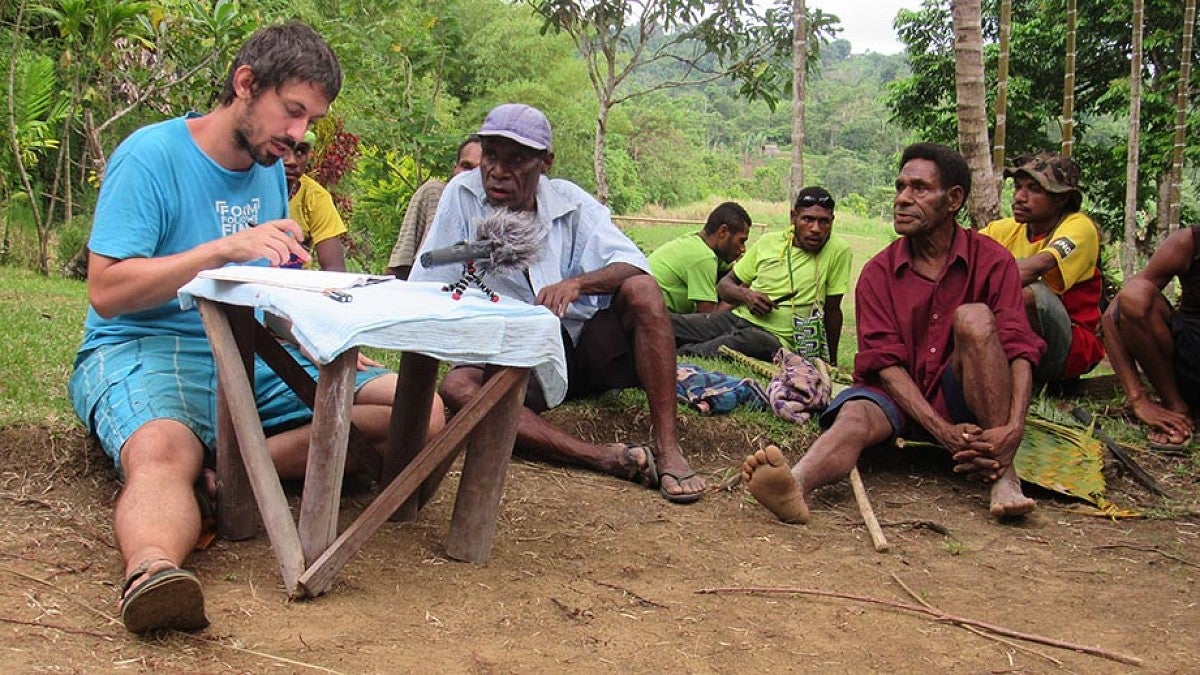Linguistics professor Don Daniels will spend next summer in Papua New Guinea, where he will document languages in the most linguistically diverse country on Earth.
Daniels has been awarded a prized National Science Foundation Career Award to begin documenting the severely underdocumented languages across the island nation, which is home to more than 800 different languages. Using the $538,000 grant, Daniels and UO graduate students will focus on the documentation and reconstruction of languages of the Rai Coast family, which consists of 32 languages spoken in Madang Province.
“Most of the languages in Papua New Guinea have not been described, so we don’t know how these languages work,” Daniels said. “We don’t know what their grammars are in any detail. Globalization is happening fast, and many of these languages are no longer being learned by the next generation, which means the writing is on the wall.”
Daniels’ team of three graduate students will focus on language documentation, which involves recording the language in use, transcribing recordings, and translating them for those who don’t speak the language. The recordings and the work will then be archived. The team is working with an archive called PARADISEC, the Pacific and Regional Archive for Digital Sources in Endangered Cultures, which is accessible to anyone who wants to explore the languages.
Another aspect of the project will be a collaboration with Divine Word University, located in Papua New Guinea. Together, UO and Divine Word officials will host language documentation workshops to help train local students to document their heritage languages.
“The people of Papua New Guinea are among the most marginalized in the world, and it’s critical to shine a light on them and talk about what their language is, what their lives are, and to reconstruct some of their history through language,” Daniels said. “How a language changes through time is something that all humans share, and it’s important to understand its development through time.”
The Rai Coast area has received little attention from historical linguists or archaeologists, Daniels said, but it lies along a highly trafficked trade route between the Papua New Guinea highlands and the Austronesian communities along the coast. Daniels has already begun working with the Jilim language community and plans to travel to Papua New Guinea next summer.
—By Victoria Sanchez, College of Arts and Sciences


